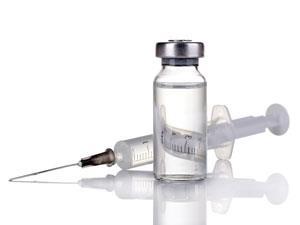Low-cost capsule can detect bleeding in the stomach in real time
US scientists have developed a low-cost capsule for patients to swallow that can detect life-threatening bleeds in the stomach and uses radio waves to transmit data to doctors in real time.

Gastrointestinal bleeding (GIB) can be caused by a variety of conditions including peptic ulcer disease, esophagitis and duodenitis. 300,000 patients in the US alone are hospitalised with upper GIB each year and of these almost one in five die of complications.
Bleeds in the gastrointestinal tract are difficult to detect. Currently, doctors monitor vital signs in high-risk patients, which may only indicate a bleed when it is already too late. Other methods include endoscopy or angiography but these are expensive, time consuming and technically demanding.
In contrast, the concept developed by Robert Westervelt and his team at Harvard University aims to be inexpensive, rapid and simple. The idea is, when a patient arrives at the emergency room with suspected gastrointestinal bleeding, medical personnel will inject a fluorescent dye called fluorescein into their bloodstream. The patient then swallows a disposable wireless capsule containing a fluorometer that can optically detect if the dye arrives in their stomach due to an active bleed and transmit this data in real time. Alex Nemiroski, who worked on the project, tells Chemistry World that inspiration for the concept came from a plumber’s technique to find leaks in water pipes, using the same fluorescent dye. ‘Ironically, this is also the only bright fluorophore that is FDA [US Food and Drug Administration] approved for injection into the blood.’
The team at Harvard had previously developed a larger model, and the challenge in this work was to miniaturise the device to the point that it could be swallowed. ‘We had to get rid of the bulky lenses that are standard in larger optical systems and replace them with pinholes. To my knowledge it’s the world’s smallest “open to the world” fluorometer,’ explains Nemiroski.
Mehmet Rasit Yuce, an expert in wireless biomedical devices at Monash University, Australia, praises the technique and commends the researchers on their ability to miniaturise the fluorometer: ‘This is a great achievement because miniaturisation of optical sensing devices has always been a challenge.’
The team plan to make the capsule even smaller in the future and have licensed the technology to a company based in Ireland who will work with them to test the technique in a pig model. Ultimately, they aim to conduct a clinical trial to see if the capsule is feasible for use in patients.
References
This article is free to access until 06 January 2016
A Nemiroski et al, Lab on a Chip, 2015, 15, 4479 (DOI: 10.1039/c5lc00770d)












No comments yet